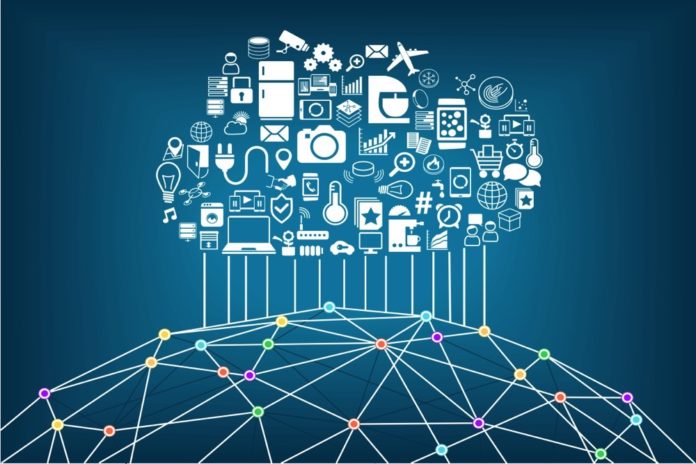The Internet has subtly broken geographical barriers. It has connected people all around the globe that has made communication more dynamic and rigorous. After focusing on people, the second step is to connect things to a network and give them the ability to interact with each other. As it is about connection and interaction between things (cars, homes, and accessories) and not people, it is called the Internet of Things (IoT).
Public companies like Alphabet Inc, Amazon, Apple and Skyworks Solution have invested in IoT technology. By the year 2020, the global market for IoT is likely to have a net worth of $457 Billion. In comparison to 2016, it will have a compound annual growth rate (CAGR) of 28.5 % (Forbes).
What is the Internet of Things (IoT)?
IoT is an infrastructure of physical devices connected to the internet. These devices use embedded sensors to generate data about their location, speed, and temperature. These sensors use various local area networks (RFID, Wi-Fi, and Zigbee) to share data with each other. They can also create connections in the broader network like GSM, 3G, and LTE. All the data generated by the interconnected devices first reach the IoT platform where it gets monitored and filtered. The IoT platform helps devices to share only relevant diagnostic information as it gets sorted through an embedded diagnostic bus. After that, the data passes through a gateway before the information finally reaches IoT platform. This makes IoT a robust analytic system that uses automation to make the devices interact with each other.
Applications of IoT:
Industries: IoT helps enterprises to find bottlenecks in their machineries and the manufacturing processes. Machines generate the data about their throughput, performance and response time using embedded sensors and send it to the manufacturers using the internet. It enables industries to repair their machinery before they go down entirely as sensors analyze their performance and send warnings when a misfunctioning happens. IoT eliminates the traditional preventative maintenance approach and uses predictive maintenance. It saves time and money for businesses and helps them achieve a more substantial Return on investment (ROI).
Cars: IoT has transformed the automotive industry. It allows the tracking and monitoring of automobiles. Car manufacturers can examine the performance of a vehicle using the metrics shared by the IoT platform. The embedded sensors in cars and buses connected through a network (LAN or WAN) exchange meaningful information to the potential nodes in a network. It helps manufacturers to find the defects in a vehicle before it causes severe damage. IoT also makes driving secure and more comfortable as a driver gets notified before a fault arises.
Agriculture: The challenges faced by the agricultural sector are vast and hard to tackle. IoT devices examine the fertility of the soil in accordance with environmental conditions (temperature, humidity and rainfall). It allows farmers to adopt a more efficient irrigation practice. The efficiency saves water and reduces human labor. This way, IoT facilitates the outdoor agriculture and helps farmers face the challenges. IoT devices are also capable of predicting and monitoring micro-climate conditions in the indoor farming.
Smart Cities: IoT has integrated the use of internet in the day to day activities. It includes automated transportation, smart energy management, and intelligent surveillance. IoT implements the concept of smart cities by consolidating internet in essential operations. It includes monitoring water supply, providing public security and bill payments. By connecting cars on the internet, IoT enables people to find a vacant parking slot without any struggle. It avoids traffic problems and makes transportation more efficient. IoT also helps in keeping the cities clean. Smart Belly Trash notifies the municipal services when the bins are overloaded. Sensors can also identify malfunctioning in electronic devices that help the authorities to avoid power failures.
Healthcare: IoT creates an interconnected healthcare environment. It provides an InterSystem platform that integrates Electronic medical records (EMR) and lightweight directory access protocol (LDAP). It allows hospitals to handle complex clinical workflows, avoid redundancies and eliminate human errors. IoT helps doctors to have a better understanding of their patient’s health. The interconnected devices collect crucial data (pulse rate, heartbeat and sleep cycle) and convert into a comprehensive report. It allows doctors to make a more in-depth analysis and draw a meaningful conclusion. IoT helps doctors to safeguard patients from unforeseen health problems such as a heart attack by taking precautions beforehand.
Terminologies related to the Internet of Things (IoT)
Gateway: It is the central point in an IoT network where different networks meet and interact with each other. Routers and Switches in a smart city is an example of a gateway in IoT.
Machine to Machine (M2M): M2M describes the technology associated with connecting different machines using the internet. As a piece of information reaches from one device to another, it is called M2M. It is the essence of IoT.
Radio-frequency identification (RFID): In IoT, RFID is the use of the electromagnetic field to keep a track on the devices that are on an IOT network. It applies to automotive, healthcare and agricultural industry.
Embedded Software: It is the collection of programs that control hardware and monitor them. It performs essential functions without involving an operating system.
Bluetooth Low Energy (BLE): It is a wireless network that enables devices in an IoT network to connect in a small range with the consumption of less power.
Internet of Things (IoT) has transformed the way people do their everyday activities and use various accessories. It has made devices more connected and transparent. The transparency in the IoT environment has provided ways to use technology in smarter ways. Thus, it has made the world more technically-driven than before.
More News to Read

